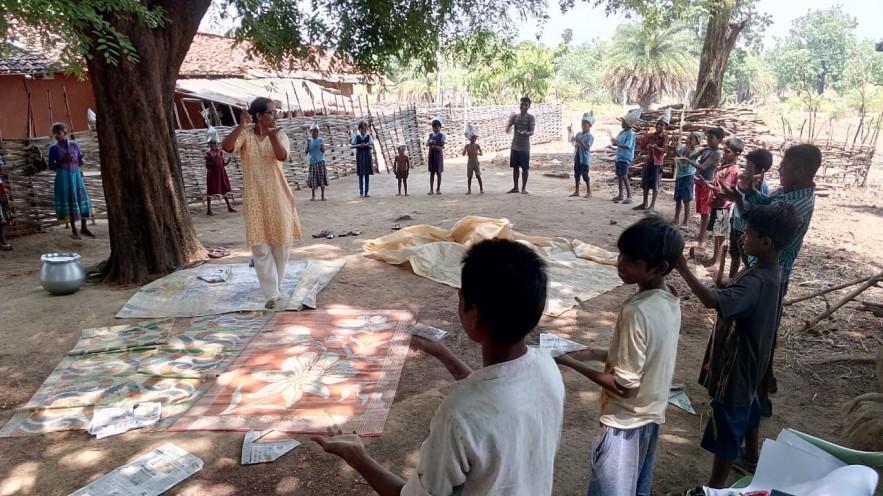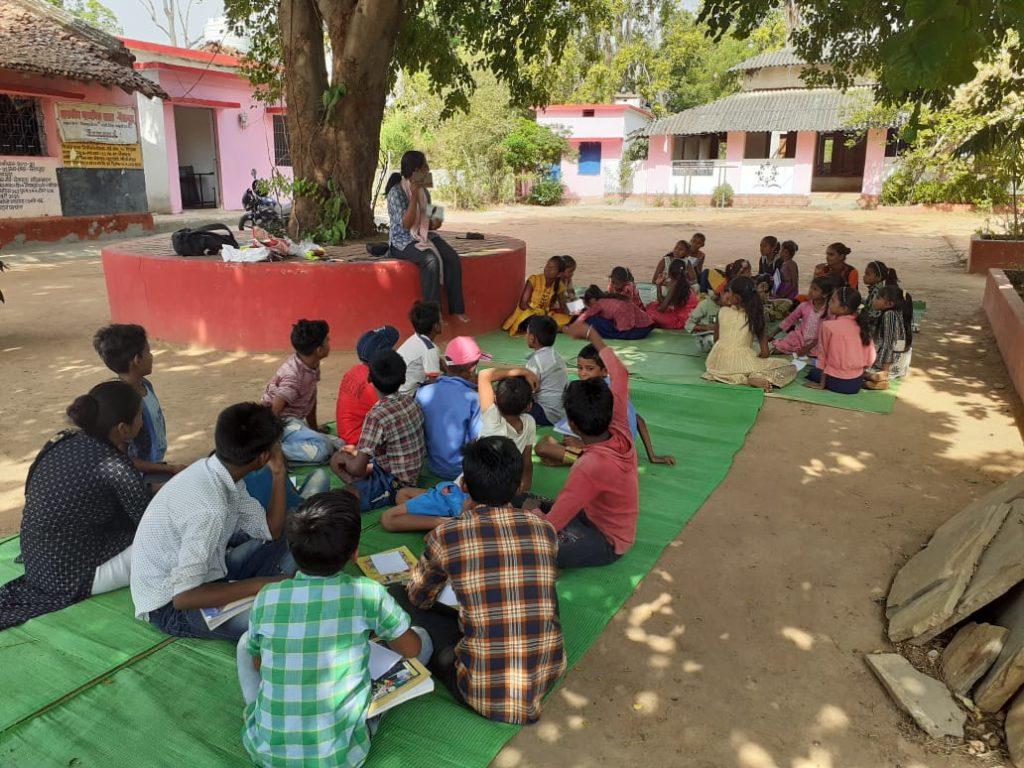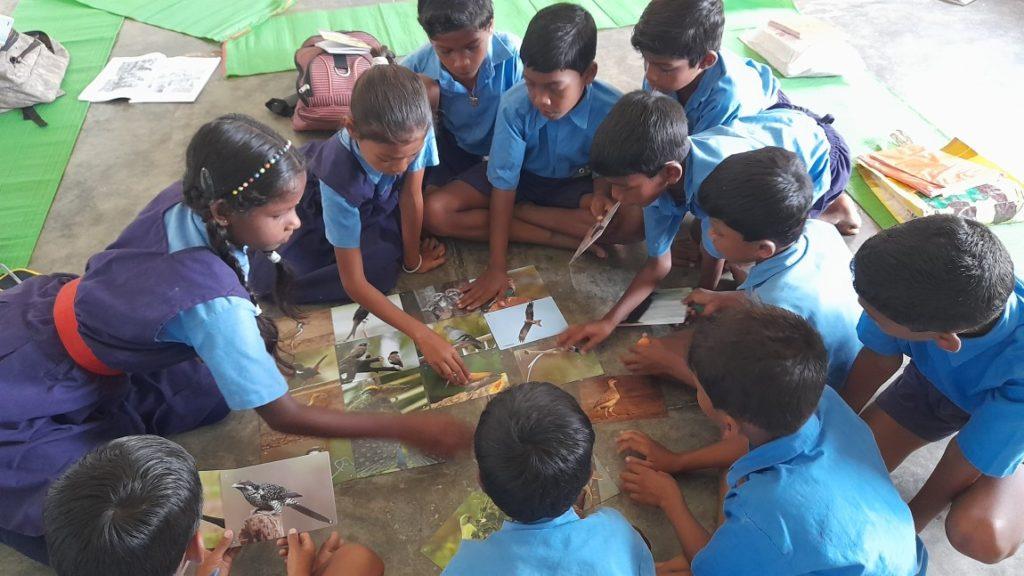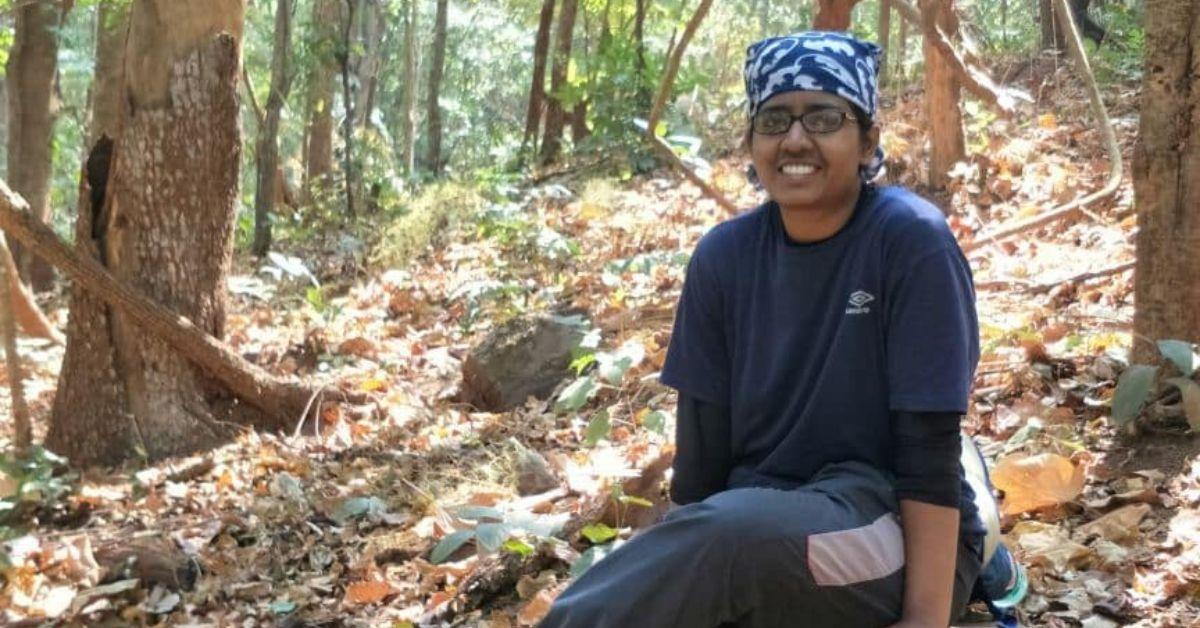Meet an Educator is a monthly series by Early Bird, where we feature the work of educators across India who are actively spreading the joy of birds and nature. This month’s featured educator is Jyoti Patale, a conservation educator from Solapur, Maharashtra. Jyoti has been closely working with tribal children in Chhattisgarh for the last 7 years.
Do tell us about yourself, where you are from, and your work
I am Jyoti P from Akluj, Solapur-Maharashtra. I had completed my studies till graduation in Maharashtra from Pune University. After graduation, my passion and dream of working closely with nature allowed me to explore new areas. I have spent almost seven years in the tribal areas of Chhattisgarh and Madhya Pradesh working as an educator. Currently, I have been associated with the Wildlife Conservation Society as a conservation educator.

Are you a birder? What about bird watching excites you?
Yes. Birds’ colours, songs, courtship behaviours and migration – everything is amazing. I get inspired by knowing amazing facts about them. During nature education explorations, I got connected with like-minded people and started many bird observation trails with them in different landscapes. Birds are everywhere and we can observe them from any place. During COVID time, I was locked down near the Pench Tiger Reserve area. There I used to do regular bird-watching from the window and terrace. It benefited me emotionally.
When and how did you get interested in bird/nature education?
In 2015, I started my work in education from Dantewada in Chhattisgarh state. Dantewada is a forest covered tribal area. All my school roads were full of dense forests, colourful birds and snakes sightings. But I found that there was no space for nature observation discussions in their classrooms. Classroom teaching was not at all context-based and they were blaming tribal students for not being interested in education. After all these reflections, I started exploring a nature-based curriculum and context-based classrooms for the students. Context of schools in tribal areas is all about trees, birds, wild food, forest-season celebrations and wild animals. I have visited many alternative schools in India for more understanding. Marudam Farm School in Tiruvannamalai is one of those in which I volunteered and got an idea about nature-based education.
What do you hope to achieve through your education work?
We all know that respecting nature and making conscious choices as humans is the need of the hour. Currently, we can clearly see a knowledge transfer gap between old age people and the younger generation. Also, there are loopholes in implementing an environment-based curriculum in schools. The least I can do through nature education is to enhance their curiosity about nature around them. By giving space for nature exploration and connections. Then we can think of creating a society who will understand the environment as a shared space.

What tools or resources have helped you in teaching about birds? Can you describe an approach that has worked exceptionally well for you?
I started with bird cards and the pocket guide. These handy materials helped me to connect them easily with colourful pictures and with amazing facts. From early bird’s resources, we have made our own pocket guide in the local language of ‘GONDI’. Posters of birds after the bird walk helped me to engage in discussion and connect common habitat birds with the pictures of birds in common habitats. I am also referring to the ‘Handbook for Bird Educators’ and it is helping me to plan and implement sessions with creative ideas. Nature Detective Bingo cards make outdoor sessions interesting. Also, the Merlin App helps with the sounds. I use the magazines Cycle and Pluto for storytelling sessions, both of which feature creative nature-based children’s literature.
Have you encountered a significant challenge as a bird/nature educator, how did you overcome it?
If you are working in tribal areas, then language is the barrier to conducting sessions. The names of the birds are different in their local language. There are times when I need to take a translator with me during the sessions. We need more creative materials in the Hindi language. We are working on making materials more context-based for tribal children within the state.

Do share any memorable moment or experience you have had in teaching kids about birds/nature. Can you recall any insightful instance that shaped your perspective?
I was doing a ‘Birds Around Us’ session in the school of Nagri block of Chhattisgarh state. Nagri block is surrounded by Udanti Sitanadi Wildlife Sanctuary and tribal block of Dhamtari district. While working on the farms and going to school, forest school students regularly see birds and animals.
After the bird walk, we discussed the birds we had seen and identified them in the bird cards. A 5th standard boy from the tribal community (labelled by his teacher as a weak child with no interest in education) identified around 30 birds with their sounds and their habitat accurately. He shared his thoughts in the Halbi language and a local volunteer translated for me. He told minute differences of the birds – how the Pond Heron is different from the Little Egret and the Little Egret from the Cattle Egret. He shared the nest-making process of Paradise Flycatcher and the differences between males and females. Additionally, he described Red-wattled Lapwing eggs he encountered while fishing in a nearby river during breeding season. He also said that we cannot see some birds year- round. He described the Indian Pitta by its colours and shared that the bird only comes for some months and then goes to another forest.
I did many bird walks and sessions in the tribal areas of Chhattisgarh and Madhya Pradesh. Their observations about nature amaze me every time. I was doing a survey for otters near Kanha Tiger Reserve. There I asked, “Do you have any problems due to otters’ presence in your river? Otters eat fish and you also fish regularly for your food. Is there any conflict?” A Baiga woman replied calmly, “ the river gives them food, they take their part of the food and we take our part.” That day she taught me coexistence in simple words.

Have you noticed any changes in your learners after they received exposure to birds and nature-based learning? If yes, what are they? If not, why do you think that is?
Working in the education field requires continuous effort. It is a slow process so change takes time. I can definitely say that children have begun observing nature and birds. They get excited about new species sightings and observe them and share them with others. The perspective about tribal children started changing among teachers. When they witness students’ enthusiasm for nature walks and making artwork based on that and taking an interest in puzzles and games related to their context. Tribal students are not interested in education, according to the education system. On the one hand, they are struggling to fit into the four walls of schools, while on the other hand, they are doing well with context-based and activity-based nature instruction.
What message would you have for your fellow educators, or somebody starting out in their nature education journey?
Just start doing work. Be kind and sensitive in your actions. You will learn during the process. Anyone can participate, regardless of where they are located. The most important thing is to understand the context of children. Children will teach you many things and you will enjoy the journey. Join the tribe. Together we will make a difference.


Wow! Wonderful journey Jyoti 🙂 I was able to connect to your passion.
Very nice to read about Jyoti and her passion and commitment! As an educator of many decades and a passionate wildlife and birder myself, I fully endorse Jyoti’s opinion that nature education and young children are a natural fit! Wonderful to read about Jyoti’s success with her nature education and in-context model! Wish you the very best going forward, Jyoti! May your tribe flourish and increase!
Thank you Hema for your kind words.
stay connected.